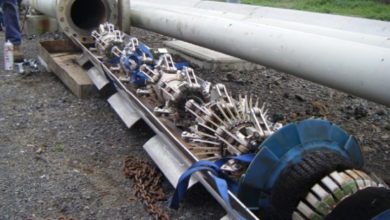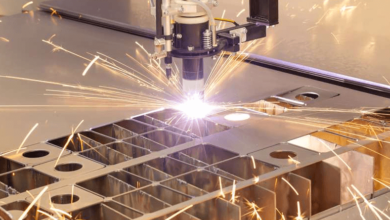Best Angle for Solar Panels: Maximizing Energy Efficiency

As a homeowner or business owner, you have the power to make a sustainable and cost-effective choice by investing in solar energy. However, to truly maximize the benefits, it’s up to you to ensure that your solar panels are installed at the best possible angle. Not to mention, the angle and placement at which solar panels are mounted determines how much sunlight they receive, directly impacting the amount of energy they generate. These factors, including geographical location, seasonal changes, and roof slope, all play a crucial role in determining the ideal tilt and orientation. In this article, we will explore the best angle for solar panels, discuss the optimum roof angles, and explain the importance of panel direction. By understanding these factors, you can take an active role in achieving maximum energy efficiency.
Best Angle for Solar Panels: Essential Tips for Optimal Efficiency
- Tips for Having the Best Angle for Solar Panels
- Things to Consider for Best Solar Panel Direction
- Best Roof Angle for Solar Panels
- Best Angle for Solar Panels: Recommended Solar Panel
Tips for Having the Best Angle for Solar Panels
In this part of this article, we will discuss the different factors you might face to find the perfect angle and solar panel direction. Take note optimal tilt angle for solar panels may depend on geographical location and seasonal changes. Here’s a detailed guide on how to determine the best angle:
Latitude-Based Tilt: The general rule is to set the panel tilt equal to your latitude. This ensures that the panels receive the maximum amount of sunlight throughout the year. For example, if your location is at 35 degrees latitude, setting your panels at a 35-degree tilt will optimize solar absorption.
Seasonal Adjustments: Adjusting the tilt of your solar panels based on the seasons can significantly improve efficiency:
- Winter: When it’s winter, we all know that the sun is lower in the sky, so improving a tilt angle of 15 degrees can help capture more sunlight and compensate for shorter daylight hours.
- Summer: When summer, the sun is higher in the sky, so lowering the tilt angle by 15 degrees allows better energy absorption by keeping the panels more perpendicular to the sun’s rays.
- Spring and Fall: Keeping the optimum angle for solar panels at their latitude-based tilt works well for these transitional seasons.
Fixed vs. Adjustable Panels: If adjusting the tilt seasonally isn’t an option, choosing a fixed angle that balances yearly solar exposure is a practical approach. An annual average tilt angle close to your latitude will still yield high efficiency.
See also: How AI Video Generator Technology Works Behind the Scenes
Things to Consider for Best Solar Panel Direction
Before installing it, you need to take note that the direction in which solar panels are installed significantly affects their ability to harness sunlight efficiently. The ideal direction varies depending on geographic location and energy usage patterns:
Optimal Orientation: In the Northern Hemisphere, solar panels should be positioned to face the true south, as this ensures they receive the most sunlight throughout the day. In the Southern Hemisphere, to have the best angle for solar panels it should face true north for the same reason.
Alternative Orientations: If south or north-facing installation is not feasible due to roof design or shading, east- or west-facing panels can still generate considerable energy.
- East-facing panels are best for homes that consume more electricity in the morning.
- West-facing panels are beneficial for households that use more energy in the afternoon and evening.
Impact of Roof and Landscape: The effectiveness of solar panels also depends on factors like roof slope, surrounding buildings, and trees that may cause shading. Proper planning and possible adjustments, such as installing panels at an optimal tilt or using tracking systems, can help maximize solar energy absorption.
Best Roof Angle for Solar Panels
One of the key factors that determine how easily to install at the optimal angle for solar panels is the pitch or slope of your roof. Here’s how different roof types impact solar panel placement:
Flat Roofs: Flat roofs require mounting brackets or racks to have the best roof angle for solar panels correctly. Adjustable mounting systems allow for seasonal tilt changes, maximizing efficiency throughout the year.
Sloped Roofs: If your roof has a pitch that matches your location’s latitude, it can naturally support solar panels at an optimal angle without additional mounting adjustments. In such cases, installation is straightforward and cost-effective.
Steep Roofs: When your roof has a steep pitch that exceeds the ideal tilt angle, it may reduce energy output. Specialized mounting solutions, such as low-profile racks or tilt-adjustment systems, can help optimize the panels’ position.
Roof Material Considerations: The material of your roof (e.g., asphalt shingles, metal, tile) can also impact the installation process. While most roofs are compatible with solar panels, structural evaluations may be necessary for older or less stable roofs.
Best Angle for Solar Panels: Recommended Solar Panel
Once you’re informed about the optimum angle for solar panels and you are looking for an efficient and reliable solar panel system, the 410-Watt Monocrystalline Solar from Nature’s Generator is a great option. Here’s why this product stands out:
Key Features:
- High Power Output: Each panel generates 410 watts, providing a total of 820 watts in this set, making it suitable for home and business use.
- Monocrystalline Cells: These high-efficiency cells allow the panels to absorb more sunlight and generate more power.
- Durable Design: The strong aluminum frame and tempered glass protect against tough weather conditions.
- Flexible Installation: These panels work for both roof and ground-mounted systems, offering versatile setup options.
- Eco-Friendly Power: Using solar panels reduces dependence on traditional electricity, cutting energy costs and environmental impact.
Performance and Benefits:
- Great Energy Efficiency: The monocrystalline structure helps capture and convert more sunlight into usable electricity.
- Withstands Harsh Weather: Built to resist extreme heat, cold, rain, and snow, ensuring long-lasting performance.
- Easy to Connect: These panels can be added to existing solar setups or used for new installations.
- Long-Term Savings: A durable build and high output mean you’ll save on electricity costs over time.
If you want a high-performance and durable solar panel system, the 410-Watt Monocrystalline Solar Panel (2-Pack) is a top-tier choice for efficient solar energy generation.
Conclusion
Finding the best angle for solar panels is key to maximizing energy production. By setting panels at the right tilt based on location and adjusting for seasonal changes, you can improve efficiency. Ensuring the correct direction—south in the Northern Hemisphere and north in the Southern Hemisphere—further enhances performance. Roof type also plays a role, with adjustments needed for flat or steep roofs to get the best angle. In addition, investing in a reliable solar panel system like the 410-Watt Monocrystalline Solar Panel can further improve your energy savings and sustainability efforts.




